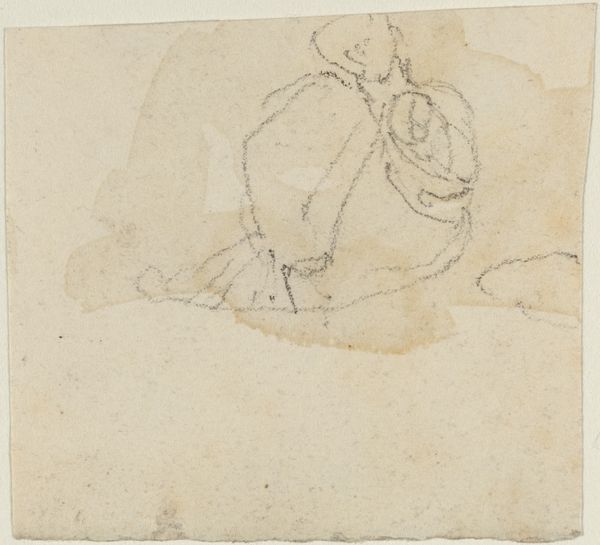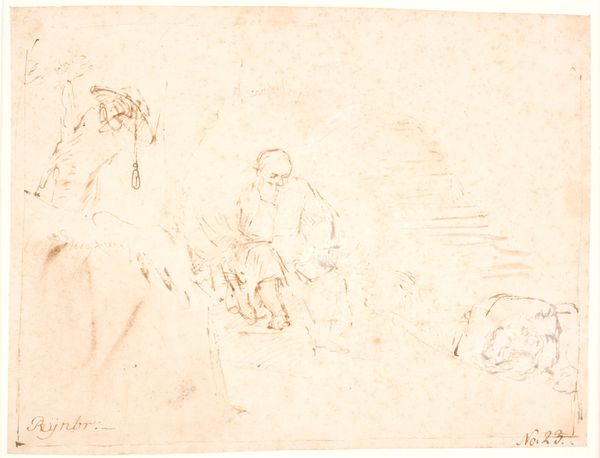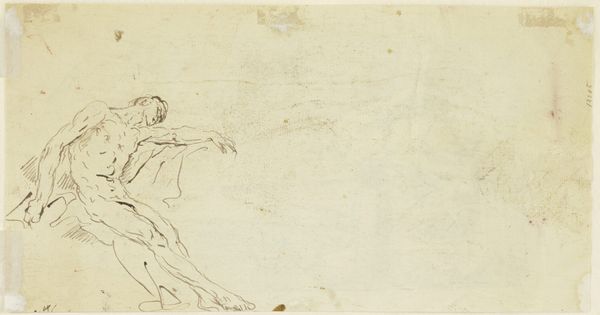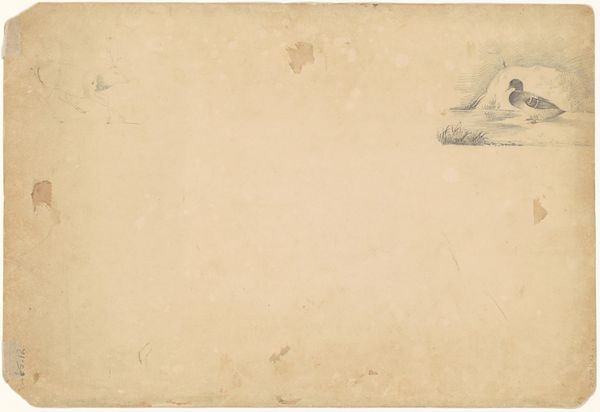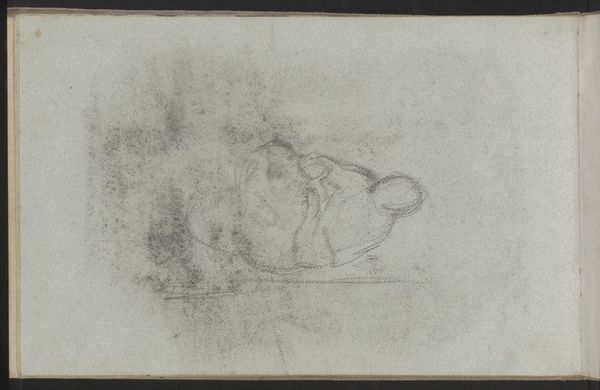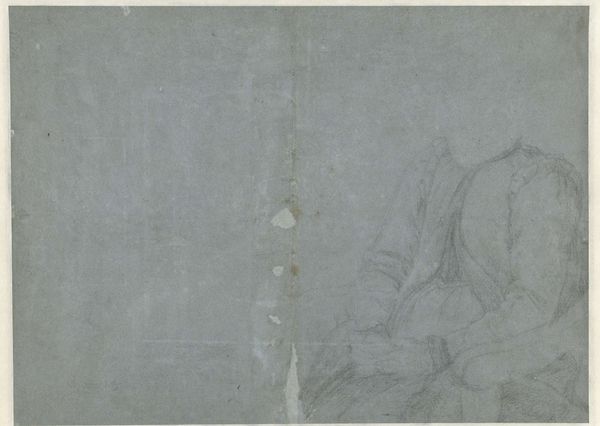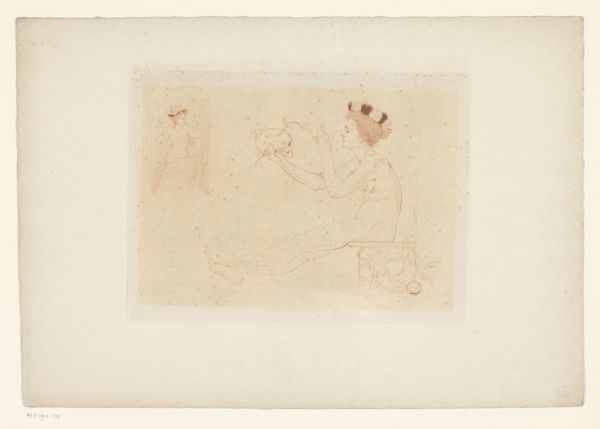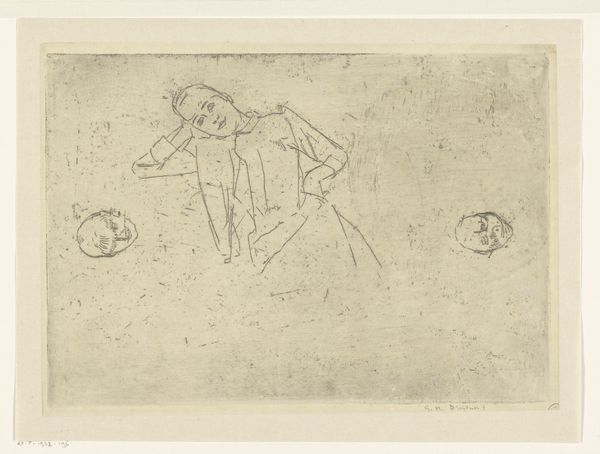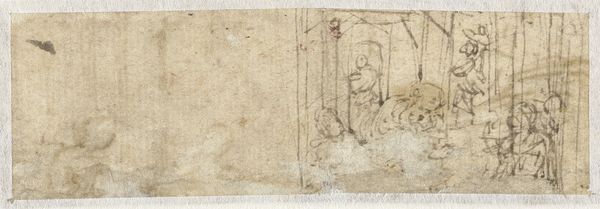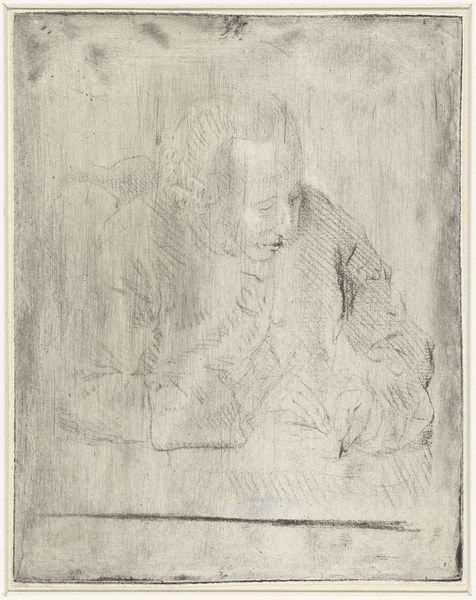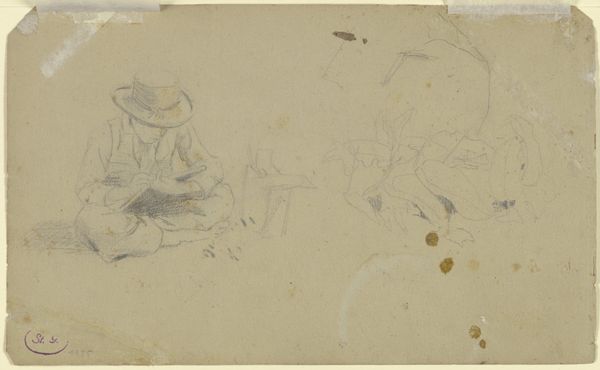
drawing, pencil, chalk
#
portrait
#
drawing
#
16_19th-century
#
figuration
#
pencil
#
chalk
Copyright: Public Domain
Editor: This sketch, "Drinking (_) person", done in chalk and pencil, probably dates back to the 19th century. I'm really struck by how raw it feels. The lines are so immediate and unrefined. What do you see in this piece, considering the artistic processes involved? Curator: Immediately, I consider the availability of materials to the artist and how that shaped the outcome. Cheap, readily accessible materials like chalk and pencil suggest a focus on process over a precious finished object. Was this piece preparatory? A casual observation? The type of paper used—its size and quality—would offer clues to the artist's intention and economic circumstances. Editor: That’s fascinating. So, even the paper tells a story about the artist's world? Curator: Precisely! Think about the social context. Was this created in a formal academic setting or on the streets? Pencil sketches, especially those focusing on everyday subjects like this 'drinking person', often served as a direct means of capturing slices of life, accessible and relatively inexpensive for the artist to produce and, perhaps, for a growing middle class to consume. How does the portrayal of someone simply drinking influence our reading of the social landscape? Editor: So, you’re saying it challenges the traditional view of art being only for the wealthy, since its subject matter isn’t as high-brow or idealized? Curator: Exactly. And consider the 'means of production', to use a term. This kind of rapid sketch bypasses the need for elaborate studios and assistants. The artist directly engages with the subject. This democratizes art making, blurring the lines between fine art and craft. The labor involved is direct, immediate. What implications do you see? Editor: I never thought about a simple sketch as a reflection of material conditions. Curator: We can read art by looking at the economic factors informing its production. Analyzing material constraints enhances our understanding of art’s relationship with society, labor, and cultural values. Editor: This changes everything about how I'll look at sketches from now on. Thanks!
Comments
No comments
Be the first to comment and join the conversation on the ultimate creative platform.
